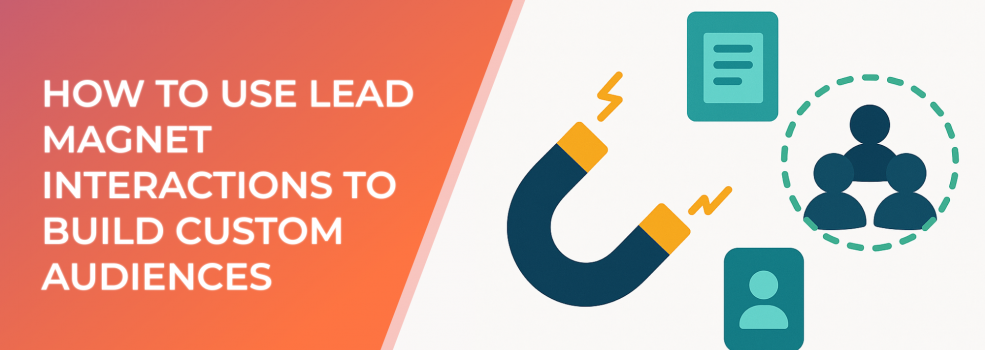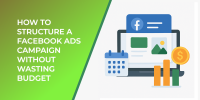A lead magnet is more than just a freebie—it’s the beginning of a relationship. Whether you’re offering an eBook, checklist, webinar, or free trial, every interaction provides valuable insights about your audience’s interests.
According to recent marketing data, over 50% of marketers report higher lead quality when using tailored lead magnets. When you tie those interactions into Facebook’s advertising system, you gain a powerful tool: the ability to retarget warm leads who are already engaged.
Step 1: Collect Interaction Data
How lead magnet interactions funnel anonymous traffic into segmented custom audiences
Every download, signup, or click on a lead magnet is a signal of intent. On Facebook, you can track these actions through:
-
Pixel events (e.g., when someone signs up for your resource)
-
Custom conversions tied to specific landing pages
-
Engagement audiences based on video views, form submissions, or content clicks
This data helps you segment people who are not just browsing but actively showing interest.
Step 2: Build Custom Audiences
Custom audiences allow you to retarget people who have interacted with your brand. Here’s how to use lead magnet interactions:
-
Audience by downloads – Retarget people who downloaded your guide with a follow-up offer.
-
Audience by video engagement – If your lead magnet promotion includes a video, create a custom audience from those who watched at least 50%.
-
Audience by form completions – Use Facebook Lead Ads to capture interest directly on-platform and retarget those users with product-specific ads.
Research shows that retargeting ads can increase conversion rates by up to 70% compared to cold audiences. That’s the difference between wasted ad spend and a high-performing funnel.
Step 3: Segment and Personalize Messaging
Not all lead magnet interactions are equal. Some users may simply browse, while others show high commitment. To maximize performance:
-
Segment by behavior – Differentiate between people who clicked vs. downloaded vs. purchased.
-
Create lookalike audiences – Use your lead magnet audience to expand reach to similar users.
-
Personalize ad creatives – Match your message to the stage of the buyer’s journey.
This is where Facebook audience targeting shines. By tailoring ads to real behaviors, you’re not guessing—you’re building campaigns based on data.
Step 4: Optimize and Measure Results
Lead magnet performance benchmarks: conversion rates by format and content type
Building a custom audience isn’t the final step. Continuous testing is key:
-
Monitor CTR (Click-Through Rate) to see if ads resonate.
-
Track CPA (Cost Per Acquisition) to measure efficiency.
-
Adjust targeting and creatives to reduce wasted spend.
Marketers who consistently refine their Facebook ad optimization strategies see significantly better ROI over time.
Final Thoughts
Using lead magnet interactions to build custom audiences transforms your Facebook campaigns from guesswork into precision targeting. Instead of chasing cold traffic, you’re nurturing warm prospects who already engaged with your brand.
Recommended Reading on LeadEnforce
To dive deeper into related strategies, check out these articles from our blog:
By integrating lead magnets with Facebook’s custom audience tools, you set the stage for higher conversions, lower costs, and smarter advertising.

